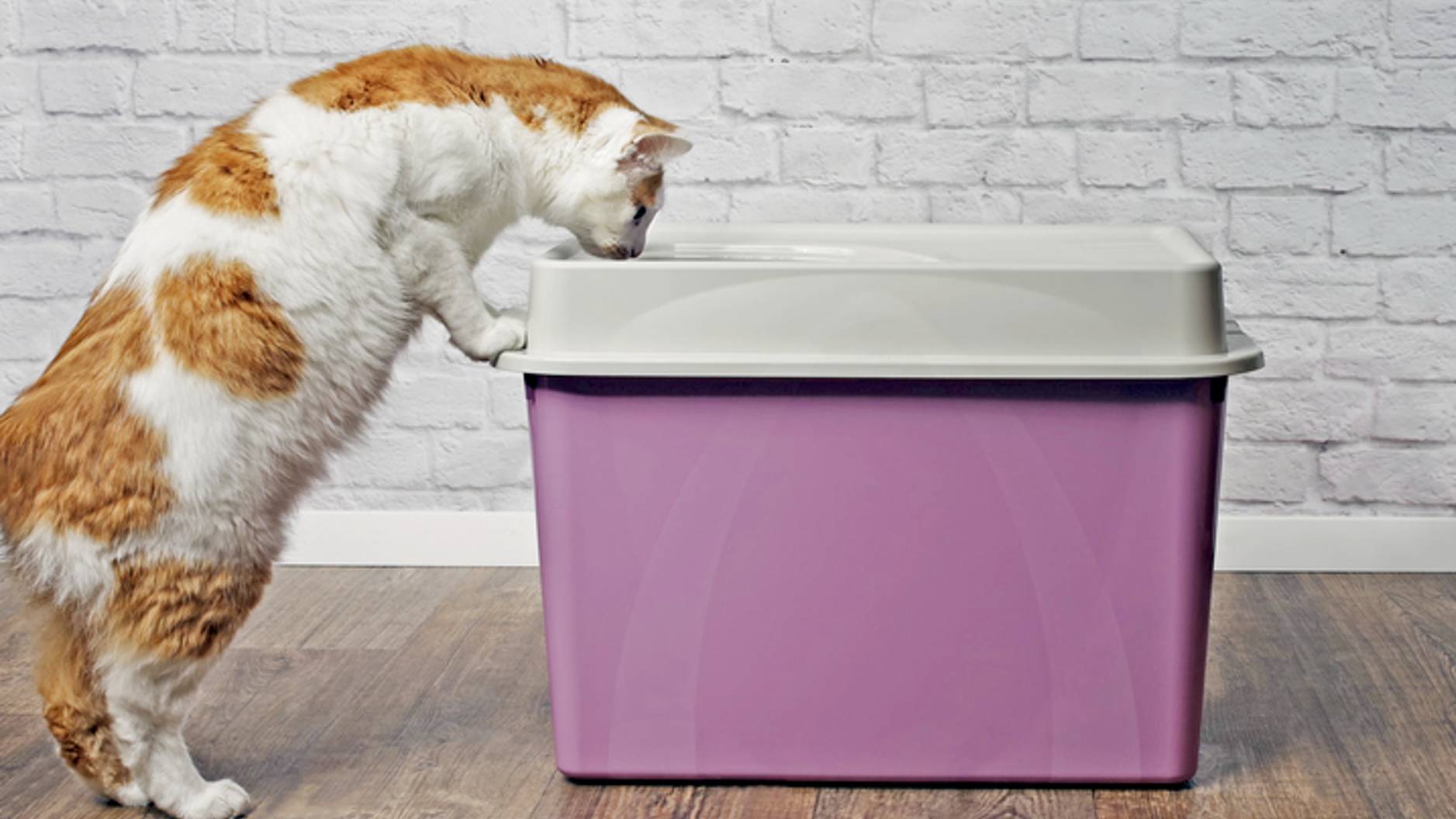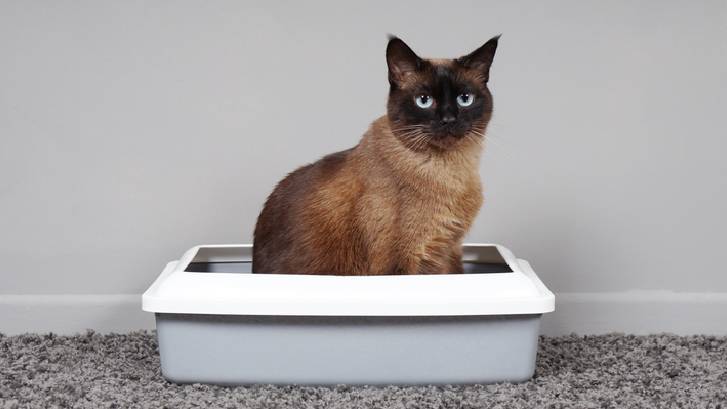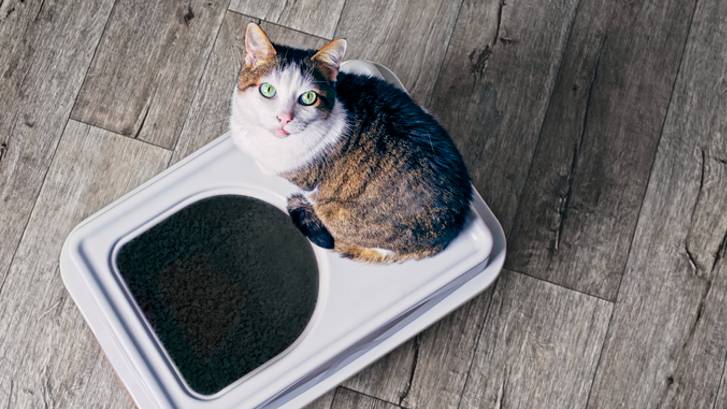How to litter box train an older cat
Knowing how to litter box train an older cat can be essential for senior cats who have been adopted into a new home

Have you adopted a senior cat that never learned to use the litter box? If so, never fear! Learning how to litter box train an older cat might just be easier than you think.
Encouraging your feline to use a litter box or tray can be an essential way of stopping your cat from peeing around the home, plus it's rather beneficial for our cats too: it offers a cozy, private place for them to go to the bathroom and taps into their natural instinct to bury their waste, after all our feline friends are well known for keeping themselves clean.
Our guide will show you the best way to help your cat adapt to using the litter box. With some basic tools and a little patience, you can teach your older cat to use the litter box easily and reliably!
Can you train an older cat to use a litter box?
Yes! Your cat can still learn how to use the litter box even if he’s no longer a young kitten. For most cats, using the litter box is a natural inclination and they will get the idea very quickly. Some cats, however, need a little extra help to learn the ins and outs of the litter box.
How to encourage your cat to use the box or tray

1. Make sure you have the right equipment
Before you start litter box training your cat, make sure you have the right equipment to set your cat up for success. You’ll need at least one litter box for each cat in the household, plus one extra. This ensures that there’s always a litter box available when your cat needs one, and prevents one bully cat from guarding the litter box and chasing other cats away.
The litter boxes should be large enough for your cat to stand up to his full height and turn around in a circle – no one likes using a small, cramped toilet! Some cats like covered litter boxes while other cats prefer to have their boxes uncovered, so offer both options for your cat if possible.
2. Consider location of litter box
Most importantly, make sure the litter boxes are placed in a quiet location, away from high traffic areas and noisy appliances. Just like us, cats like some privacy while they do their business!
If possible, try to have a litter box on each floor of the house, so that there’s always an easily accessible bathroom at your cat’s disposal. This is especially important for senior cats, who may find it difficult or painful to go up and down stairs to reach the litter box on another floor of the house.
3. It's all in the timing
Most cats naturally know how to use a litter box and only need some gentle encouragement to get the idea. You can help your cat learn how to use the litter box by gently putting him in it at the times when he’s most likely to relieve himself, such as after a meal or when he wakes up from a nap.
Pay close attention to your cat’s eating and elimination habits, so you’ll know when he’ll most likely need to go. When he does use the litter box appropriately, you can reward him with a tasty treat, some catnip, or play time with his favorite toy.

5. Confine training to a quiet area
If your kitty still isn’t getting the idea, try confining him in a smaller, quiet space such as a bathroom or small bedroom. Provide 1-2 litter boxes in this space and try offering different types of cat litter to see what your cat will prefer.
Be sure to remove other objects that may be tempting for your cat to eliminate on, such as house plants and piles of laundry. Monitor your cat’s urination and defecation habits closely, and only let him out of confinement after he’s eliminated in the box.
6. Match your cat's preferences
Sometimes, getting your cat to use the litter box means adjusting your routine to match your cat’s preferences. Some cats have unique preferences for the locations and substrates where they eliminate, and they can be very stubborn if these preferences aren’t met. For example, if your cat always urinates in the living room, placing a litter box in this area may cure the problem.
Similarly, if your cat keeps urinating on your laundry, a makeshift litter box filled with towels or pee pads may be the way to go.
Try troubleshooting issues such as the size and location of the litter box, the type of cat litter substrate, and the number of litter boxes in the house to see if humoring these preferences will help your cat learn to use the litter box consistently.
7. Keep the litter box clean
Cats are especially fastidious creatures, and some cats won’t use the litter box at all if it isn’t clean. Keeping the box clean and fresh is especially important during litter box training to make the litter box as appealing as possible to your cat. Use an unscented clay cat litter, and try offering both clumping and non-clumping varieties to see which type your cat prefers.
For your cat’s health and comfort, make sure the litter box is cleaned at least once a day, with a full litter change out every 1-2 weeks. After all, no one likes to use a dirty bathroom!
What to try next
If you’ve tried all of the above and your older cat still doesn’t use the litter box consistently, then it’s time for a visit to your veterinarian. Inappropriate urination or defecation can be a sign of a medical problem such as a urinary tract infection, parasites, pain, or other concerns.
Your veterinarian will perform a full physical examination on your cat and may recommend some additional testing such as evaluation of fecal and urine samples. The good news in that if a medical cause for your cat’s inappropriate elimination is identified, treating it can often resolve the issue and your cat may begin to use the litter box normally.
Good luck with your litter box training!
Training your older cat to use the litter box is simple, all you need are patience and the right tools to make your cat feel at home. With an appropriate litter box setup and a little encouragement from you, your cat should naturally begin to use the litter box for all his elimination needs.
If you have trouble along the way, your veterinarian is a great resource to help you with any behavior problems you and your cat may encounter. Your vet can also help you rule out an underlying medical issue if your cat continues to struggle with his litter box training.
PetsRadar Newsletter
Get the best advice, tips and top tech for your beloved Pets
Dr. Elizabeth Racine is a small animal general practice vet covering all things pet health and wellness. Her special interests include veterinary behavior, nutrition, and internal medicine.
As a freelance writer, Dr. Racine has written content for major companies in the industry such as the American Kennel Club, Merck Animal Health, Bayer PetBasics, Elanco, and CareCredit. In her free time, Dr. Racine enjoys playing trampoline dodgeball, hiking with her beagle Dasher, and spending time with her three mischievous cats.

